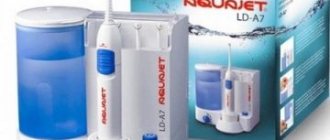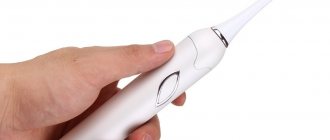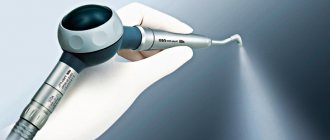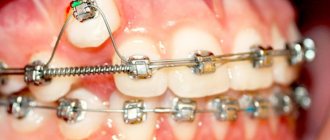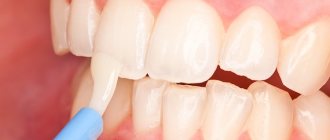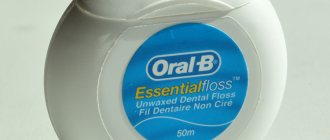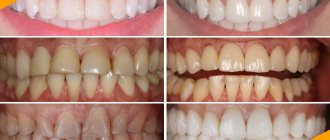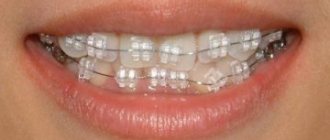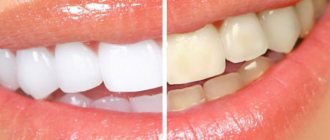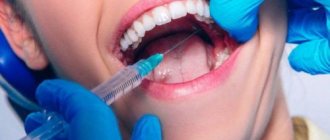Plastic surgery as a separate field of medicine today is developing rapidly and actively throughout the world and in Russia in particular. Modern women resort to services for a variety of operations, including facelifts, plastic surgery of the nose, chin and ears, liposuction of the abdomen, buttocks and other parts of the body. But breast correction surgery is especially popular – mammoplasty.
Decisions to undergo mammoplasty - breast correction surgery - are made for various reasons. A woman may be dissatisfied with the shape or size of her bust, its condition after pregnancy, breastfeeding or sudden weight loss, asymmetry of the mammary glands and wants to make a correction. But most often, mammoplasty is performed with the aim of enlarging the female breast, and in this case, implants, that is, endoprostheses, are used to achieve the desired shape and size of the breast.
The implants used in plastic surgery are different; there are several types. Endoprostheses vary in volume, shell surface texture, density, fillers, profile height and other parameters. This article on our website will discuss all types of breast implants. And here you can get answers to the most pressing questions, as well as find a lot of useful information about surgery and endoprostheses, which are usually used to enlarge the mammary glands.
Implants: what are they?
What is a breast implant? It is a prosthesis used to be inserted into a woman's breast. The implant consists of an outer shell as well as a filler. Various substances are used as the latter, and all of them must be compatible with natural tissues of the body, meet safety requirements and comply with generally accepted medical standards. Otherwise, there are risks of harm to health or even life. The shell must also be safe, hypoallergenic and strong enough so that the filler does not leak beyond its boundaries.
Breast implants are used in plastic surgery most often during breast augmentation surgery, when the patient is dissatisfied with its size and wants to get a larger volume. But endoprostheses can also correct the unattractive shape of the mammary glands. Implants can also correct other defects, for example, severe asymmetry, ptosis (drooping). Doctors use them after a radical or partial mastectomy for cancer treatment to restore and reconstruct the mammary glands after they have been removed.
Indications for breast augmentation with implants
The most common reason why patients turn to a plastic surgeon is the discrepancy between the shape and volume of the breast and subjective aesthetic ideas about the beauty of the breast. Indications for breast augmentation with implants include:
- loss of breast shape and volume as a result of weight loss and breastfeeding;
- genetic predisposition to micromastia;
- ptosis caused by age-related changes in the skin and soft tissues;
- breast asymmetry;
- loss of shape/volume associated with chest trauma;
- complete/significant breast loss after mastectomy.
How did breast implants come about?
The history of the development of breast implants began in the nineteenth century. The first unique surgical operation aimed at enlarging female breasts took place back in 1889. This procedure to add breast volume was performed using liquid paraffin as a material. Over time, doctors began to use other materials, sometimes unexpected and strange ones - wool, rubber, ivory fragments, glass beads. Only in the 61st year of the last century, specialists developed the world's first silicone breast implants.
The production of breast implants was also established in the Soviet Union, where bovine pericardium was first used to make the shells. Vegetable oils were used as filling. Next, the shells were modernized and made of latex rubber, natural rubber. Fillers were made from all kinds of materials, and saline solutions became the safest. But technology does not stand still: new fillers are constantly appearing, which are of high quality, have a structure close to natural and are not rejected by the human body.
Should I use breast implants for mammoplasty: all the benefits
If you have not yet decided whether to enlarge your breasts with implants, then appreciate all the undeniable advantages of such plastic surgeries:
- The ability to solve a variety of patient problems - eliminating ptosis and asymmetry, increasing the size or restoring removed mammary glands due to cancer. All this can be discussed on the day of consultation with the doctor.
- A good result after just one operation: an increase in several sizes at once, a beautiful symmetrical shape, a toned, appetizing bust.
- Absolute safety. All implants used in clinics and plastic surgery centers are biocompatible, durable and of high quality, and also comply with standards and regulations. Certified endoprostheses undergo studies confirming the absence of health risks. And the surgical technique is refined to the smallest detail: surgeons with extensive experience and a high level of qualifications perform surgical interventions regularly, which ensures a result with 100% success during mammoplasty surgery and the absence of errors.
- Natural aesthetic appearance. Properly selected and well-installed implants are difficult to distinguish by eye and even by palpation from your own breast (especially if anatomical models are used).
- Maximum comfort. If the implants are optimally selected in size, texture and shape, then after the postoperative period they are not felt at all in the mammary glands and do not cause discomfort or unpleasant sensations.
- Low invasiveness of the operation. The installation of implants is performed under general anesthesia of the patient, and after the intervention, the plastic surgeon may prescribe painkillers to minimize the pain that occurs. The incisions in the access areas are small, so after surgery the sutures heal in a short time.
- Minimum risk of damage and especially rupture. The shell of silicone and other implants is very durable, due to which it is able to withstand mechanical stress (for example, mild impacts), does not burst due to pressure changes, and does not deform during active movements of the patient. A woman can absolutely lead a normal and familiar lifestyle.
- The probability of complications is close to zero. If there was a detailed consultation with a doctor, the operation was performed in a licensed clinic by an experienced and highly qualified plastic surgeon, high-quality implants were used, and the woman followed all the rules for successful rehabilitation after the intervention, then there are no risks of undesirable consequences.
Currently, there is simply no alternative to augmentation surgery performed with implants. If reduction or mastopexy (lift surgery) is sometimes possible to perform without endoprostheses, then increasing the bust by several sizes, as well as significantly adjusting its shape, is only possible with silicone implants.
Types of breast augmentation
There are several methods of breast augmentation, differing in technique and purpose:
- using implants – installation of an endoprosthesis allows you to simulate breasts of any shape and size;
- breast lipofilling is a procedure that involves taking fat from areas of unwanted deposits, processing it and introducing the resulting biomaterial into the breast; This method of breast augmentation is not suitable for patients with a thin build and can be used as an auxiliary method.
What are breast implants: the main differences
What types of breast implants are used in plastic surgery, and how do they differ from each other?
Each prosthesis has its own basic parameters in which they differ:
- form;
- filler material;
- type of shell surface;
- profile height;
- size.
Currently, there are a large number of different models of breast implants with different characteristics on the global and Russian market, so it is especially important to choose the most suitable option in a particular case so that the results of the operation meet the patient’s expectations, the aesthetic effect corresponds to the patient’s preferences, and the risks of postoperative complications are minimal .
Types of implants
A huge selection of POLYTECH breast implants allows you to select endoprostheses in full accordance with the anatomical features and wishes of the patient and create a bust that looks and feels indistinguishable from a natural one.
Shell
Surface options:
- POLYsmoooth - smooth shell of implants (currently used quite rarely and is considered obsolete);
- MESMO sensitive is a microtextured surface that reduces the risk of capsular contracture (formation of fibrous tissue around a foreign body) and seroma (accumulation of serous fluid in the suture area).
- POLYtxt is a textured, rough surface that prevents the formation of keloid tissue and ensures reliable fixation of the endoprosthesis.
- Microthane is a special micropolyurethane shell that is maximally compatible with human tissue. Minimizes the risk of displacement and rotation of a foreign body.
According to laboratory studies, POLYTECH polyurethane implants not only reduce the likelihood of foreign body displacement to zero, but also significantly reduce the risk of developing postoperative complications. During the restoration process, the connective tissue grows into the polyurethane foam matrix, which prevents the formation of fibrous areas. Over almost 20 years of using materials with a similar shell, complications were observed in less than 0.8% of women.
Maximum strength and elasticity of the shell of POLYTECH breast implants is achieved through eight layers of material. The presence of a special barrier coating greatly increases the safety of the implant and eliminates the possibility of penetration of silicone gel molecules into the body tissues.
Form
Breast implants, regardless of the shell material, can be made in one of four forms:
- Meme - dome-shaped dentures with a round base, allowing you to get the most curvy shapes.
- Replicon are anatomical implants with a round base, mainly used to shape the breasts of adult women with a normal build.
- Optimam - anatomical products with a shortened base, allow patients with excess weight to achieve the most natural result.
- Opticon - anatomical oblong shape is ideal for slender, athletic women. Such implants are not felt at all even with high physical activity and look harmonious even on girls with a very narrow chest.
On the inside, all products have a slightly concave shape, due to which the most snug fit of the foreign body to the mammary gland or pectoral muscle is achieved.
Profile
Depending on the physiological characteristics of the patient, the profile of transplanted products is also selected:
- TLS (low) - for petite ladies with a narrow chest;
- TMS (medium) - the most common option, also used for severe breast ptosis;
- THS (high) - with significant prolapse of the mammary glands, it allows you to tighten the bust without cutting off excess dermis;
- TXS (extra tall) - suitable for women who want to get the most curvy shape.
Filler
The filler is a highly cohesive silicone gel, which instantly restores its original shape after moderate mechanical impact, gives the natural softness of the female breast and does not leak if the shell is damaged.
In addition, the company produces special two-gel implants DiagonGel 4Two, filled with EasyFitGel and ShaparGel. The first ensures a tighter fit of the endoprosthesis to the chest and maintains its natural shape during active movements and sports, the second creates a push-up effect and promotes the anatomically correct position of the nipples without additional correction.
The lineup
The POLYTECH Health & Aesthetics line of breast implants includes:
- 236 forms of endoprostheses with different ratios of profile, height and width;
- four styles of breast implants with four projections;
- three types of shells (smooth, microtextured and micropolyurethane);
- 28 sizes of special expanders (products for pre-stretching the skin);
- 144 sizes of sizers (prosthetic simulators), corresponding to most of the presented implants.
Since 2008, the company has introduced an innovative modular system to describe its product line. This greatly facilitated the selection of the necessary materials and made it possible, even at the consultation stage, to clearly explain to patients exactly what breast shape they could get as a result of plastic surgery.
Form options
Round
teardrop-shaped
Cone-shaped
Until recently, there were only two options for the shape of implants, but recently a third one has appeared. Let's look at everything:
- Round form. Round implants have a hemispherical configuration and have the so-called “push-up” effect, that is, the final result creates the most elevated breasts, making them more voluminous - this is their main distinguishing characteristic. Endoprostheses of this form are used for augmentation mammoplasty, if it is necessary to correct asymmetry, increase the size by several points at once, eliminate ptosis after pregnancy or that has arisen against the background of inevitable age-related changes. A big advantage of round-shaped implants is the preservation of their natural original appearance even during rotation: displacements and changes in position almost do not change the contours of the prosthesis in the chest, and migrations remain almost unnoticeable. Therefore, this form is recommended if the desired goal of breast surgery is to increase the size with preferential filling of the central region and the upper pole of the gland. The cost is low compared to other types.
- Drop shape. It is also called anatomical, and it is considered the most natural, since it looks as natural as possible and is practically no different from the natural female breast, according to numerous reviews from women. Anatomical implants allow you to correct asymmetry, model the shape, shift the focus to the lower segment and reduce the distance between the glands, which is of great importance in terms of aesthetics. But the choice of teardrop-shaped prostheses is not suitable for low-set busts, and is also not used for severe ptosis. Anatomically shaped implants also have a significant drawback: when displaced, they look unnatural, since the contours appear through the mammary gland and cause changes in its outline. In addition, after installation of anatomical drop-shaped endoprostheses, it is undesirable to wear push-up bras, as they can deform the implants. The price of such implants is higher when compared with round models.
- Cone shape. This is a relatively new development designed for women who have tubular breasts, that is, a pointed shape. But not all manufacturers have such models in their lineups, and their prices are quite high. The cost of round and anatomical endoprostheses is lower.
Good to know!
When implants that have an anatomical shape are displaced, a repeat mammoplasty operation is almost always necessary - re-endoprosthetics. Moreover, previously installed endoprostheses are often replaced.
Pros and cons of POLYTECH implants
Endoprostheses of the Polytech brand are innovative implants that are as safe as possible for patients and fully comply with modern quality standards. Their advantages include:
- increased degree of filling of the implant to achieve optimal volume;
- the presence of an additional size D in most series of POLYTECH breast implants, which allows you to correctly position the nipple areolas without additional correction;
- the ability to manufacture custom-made endoprostheses within the framework of the “Custom Made Implants” program, including POLYTECH polyurethane implants;
- compliance with quality standards, including the European regulation for honey. class III devices;
- mandatory five-stage laboratory tests for each implant (products are tested for tension, elongation, wear resistance, etc.);
- high safety of endoprostheses and minimal risk of complications due to the eight-layer textured shell.
The only drawback of POLYTECH implants is their price. Although the high cost of the products is fully compensated by their quality and minimal risk of postoperative complications.
Safety
All Polytech endoprostheses have quality certificates and a mandatory CE mark, which confirms their compliance with EU standards. In addition, since 2007, the company has offered all patients with their implants to become participants in the Implants of Excellence voluntary guarantee program. Registration of breast implants on the company’s official website allows you to receive:
- free lifetime replacement of endoprostheses in case of rupture of the shell associated with the properties of the material;
- replacement of implants within 10 years after surgery when diagnosed with capsular contracture of grade III or IV according to Breaker.
To participate in the program, you need to fill out a special form at the office within 6 months after plastic surgery. POLYTECH website. For registration, passport data of the implant will be required (the doctor issues a document for endoprostheses to the patient immediately after the operation). The manufacturer's warranty is already included in the price of POLYTECH implants and does not require additional payments. Also, a waiver of the warranty will not allow you to reduce the cost of endoprostheses or save on surgery.
Variety of filler materials
There are several different types of fillers available for breast implants, but only two of them are fully approved by the Food and Drug Administration (called the FDA for short). This is a saline solution, as well as the usual and widespread silicone. But below we will look at all the options.
For your information!
Implant shells are made of dense silicone, usually multilayer.
Saline solution
A saline solution, also called saline or sodium chloride, is placed into the implant shell through a valve after the prosthesis is installed. The advantages of this choice include safety and spontaneous removal of material by the body if the endoprosthesis ruptures. It is also possible to place implants in the breast through small incisions, including near the areola. The affordable price is also a plus.
There are also disadvantages. The first is the likelihood of gurgling sounds when the prosthesis is not filled enough. The second is less strength when compared with silicone models. The third is minimal elasticity, which affects tactile sensations and shape. Contouring and deformations are possible.
Silicone
Initially, liquid silicone was used to enlarge the mammary gland, but it often “sweated,” that is, seeped through the membrane and got into the breast tissue. Therefore, recently only modern and safe silicone compounds have been used. These are cohesive gels that differ in density, that is, cohesiveness.
Each manufacturer uses its own classification of cohesive gels for breast plastic surgery, but usually there are the following three degrees of density:
- "Soft touch". Such silicone gels are the least dense and very soft, therefore they resemble natural female breasts to the touch and also behave naturally when moving.
- Medium-cohesive, that is, standard silicone gels have a medium degree of density, very similar in structure to the glandular tissue of the breast.
- Highly cohesive gels. A silicone implant filled with this type of gel has a high density, due to which a memory effect is achieved (Memory Gel): the shape is maintained in a constant state and is not subject to deformation.
The advantages include elasticity, aesthetic appearance, natural tactile sensations, which is confirmed by reviews, videos and photos of surgeons’ work. In addition, even if the implant is damaged, due to the integrity of the gel with the shell and the high density of the material, silicone will not migrate throughout the body, remaining in the mammary gland area.
But there are also disadvantages. Firstly, the incisions for installing silicone implants must be larger than for saline implants. Secondly, ruptures of silicone endoprostheses often go unnoticed.
Hydrogel
Biocompatible hydrogel is also called biogel or bioimplant. Such endoprostheses are produced on the basis of carboxymethylcellulose, a naturally occurring polymer.
There are many advantages. Firstly, when the biogel migrates outside the shell, the gel breaks up into separate components - water with carbon dioxide and glucose. All these substances are eliminated very quickly and naturally without causing harm. Secondly, due to its high elasticity, access can be created with small incisions. Thirdly, the structure of the biogel is similar to the glandular tissues of the breast, which creates a natural appearance and natural shape. Fourthly, when bioimplants are installed, capsular contracture develops less frequently.
There are also disadvantages. The first is the lack of official FDA certification. For this reason, the choice of bioimplants is not allowed for breast augmentation in some countries. The second disadvantage is the possibility of damage to the shell. The third negative point is the gradual dissolution of the biogel with a subsequent decrease in the size of the mammary gland. And such endoprostheses are also the most expensive.
Silica gel
Silica gel dentures are filled with gel and special small silicate balls. The advantages include low weight (30% lighter than saline and silicone endoprostheses), minimal risks of breast ptosis and the possibility of using large implants. In addition, such prostheses give a woman’s breasts a natural appearance.
But silica gel models began to be used recently, so they have not undergone large-scale and long-term clinical trials. It is impossible to say exactly how such an implant for female breast enlargement will behave after a year, 10, 15 or 20 years.
EUROSILICONE
Photos before and after surgery
View photo gallery...
The increase in breast volume was performed using anatomical implants Eurosilicone 305 cm3. Submammary access. Before and after surgery 3 months later.
Breast augmentation with anatomical implants Eurosilicone 275 cm3. Periareolar access. Before and after surgery 1 year later.
Selection of implants
The selection of endoprostheses is solely within the competence of the surgeon. The choice is based on the anatomy of the mammary glands. The essence of the selection lies in the optimal geometric parameters of the installed implant for a given mammary gland. The main anatomical parameters are the width and height of the mammary gland. The thickness of the soft tissues and their extensibility are also important.
For example: if the width of the breast is 13 cm, and the thickness of the soft tissue with good extensibility is 1 cm, then you can install an implant with a width of 11-11.5 cm. In terms of volume (depending on the model), this is 290-330 cm3.
It is important to consider that this example is very simplified, but the process itself is much more complex and takes into account a lot of additional parameters. In other words, the implant should not be much wider than the gland itself, as this can lead to complications, such as:
- double fold,
- visualization of the implant contour,
- unnatural-looking breasts, etc.
Read more about possible complications here.
What types of implants are there?
Until reliable, high-quality breast implants became available, mammoplasty was a rather dangerous operation. Previously, glass balls, olive oil, paraffin and other fillers were used, each more exotic than the other, which ultimately led to complications and caused more problems than joy.
The creation of silicone implants has led to a revolution in breast augmentation. The correct selection of implants is central to the operation.
So, let's look at what types of implants there are, who produces them, what they consist of, and how reliable they are.
Breast implants can be classified according to the following parameters:
- By filler
- By shape
- By surface type
Types of implants by filler.
A filler is a substance that fills the shell of the implant and gives it a given volume and, in some cases, shape. Based on the filler, breast implants can be divided into two types: silicone and saline.
Silicone implants
Appeared in 1961. At that time, no one thought to create a shell of silicone rubber and fill it with silicone gel. Thomas Cronin revolutionized breast plastic surgery with the creation of the first silicone implant.
The filler was liquid silicone gel. The gel was quite fluid, but at the same time, its density well simulated natural breast tissue. This was immediately positively assessed by both surgeons and patients.
Then came the period of improvement of implants. They changed the shape, shell thickness, gel quality, etc. Evolution was not easy. Difficulties arose with the shell; silicone gel was “accused” of causing breast cancer and connective tissue diseases. There was a period of their complete ban in the USA.
Currently, surgeons use the fifth generation of silicone implants. From their “great-grandfather” from 1961, only the name remained. Now it is a reliable high-tech product for aesthetic breast surgery.
These implants use cohesive silicone gel, which is characterized by shape memory. The gel is not runny, holds its shape well, but is quite soft. The gel molecules are large, making it difficult for them to diffuse through the shell.
Saline or saline implants
This type of implant includes implants filled during surgery with saline solution or other solutions based on it.
The first such implants appeared in 1964 as an alternative to silicone ones. The reason for their appearance was fears that silicone gel could cause breast diseases. For a long time, they had no alternative in the United States, since silicone-filled implants were prohibited.
Saline implants have a lot of disadvantages, which in many cases dramatically worsen the outcome of the operation. The biggest problems are associated with the filler, since water does not have characteristics even close to those of soft breast tissue. Gurgling, wrinkling of the implants and deformation of the breast shape are the most common problems when installing saline implants.
This type of implant is rarely used for some special operations. After the ban on silicone implants was lifted, surgeons forgot about them like a bad dream.
Types of breast implants by shape.
Based on their shape, breast implants are divided into two groups:
Round implants
They are also called spherical. The picture explains their name perfectly. In terms of sales, round implants firmly occupy first place. These are the most common implants. The reasons for their popularity are as follows:
- when installing round implants, the upper pole of the breast is more convex for the surgeon
- round implants are easier to install
- round implants are cheaper
- the vast majority of patients in the world want large convex breasts
Anatomically shaped implants
This type of implant seeks to replicate the shape of a normal breast. They are popular in Russia, the CIS countries and Eastern Europe, since patients often want to enlarge their breasts, but at the same time they should remain of a natural shape. However, there are some difficulties associated with anatomical implants:
- they are significantly more expensive
- installing anatomical implants is more difficult
When choosing the shape of implants, the surgeon must take into account the canons of beauty of society and the wishes of the patient. Experience shows that in our country women prefer a natural breast shape. For this reason, surgeons are increasingly using anatomical implants.
Types of breast implants by surface type
Based on the type of implant shell surface, they can be divided into two groups: implants with a smooth surface and implants with a textured surface.
At the beginning of their evolution, implants had a smooth surface. This was the case for quite a long time, but in search of better solutions, implants with a textured surface appeared. The texture is applied to the surface of the implants using salt crystals of a certain size. Textured implants have the following advantages:
- less chance of developing capsular contracture
- better fixation in the soft tissues of the chest
- less risk of implants shifting over time
Despite their venerable age, smooth implants do not lose their popularity and here’s why:
- they are significantly cheaper
- easier to install for the surgeon
- they do not grow into the soft tissue of the breast and therefore can be easily replaced with implants of larger volume
In many ways, the choice of implants is determined by the aesthetic criteria of the patient and the surgeon, so the choice should always be individual.
Types of implants by profile
The profile of the implant is called the thickness of the implant or, we can say, that this is the distance from the back wall of the implant to its highest point. The larger the profile, the larger the volume of the implant.
- The low profile is indicated for patients who do not want a significant increase in volume and who have a wide base of the breast. With a low profile, the volume of the implant is smaller.
- The average profile is indicated for patients with a normal chest and medium-sized breasts. Convenient for simultaneous breast enlargement and lifting.
- A high profile is indicated for patients with a narrow chest and a narrow base of the mammary gland. These implants are designed to obtain the best results with complex initial data.
These are just some of the main differences between implants. Each manufacturer has dozens of implant models for almost any case. The choice of a specific model depends on the tasks assigned to the surgeon and the expected result. This is always an individual choice of the patient and the surgeon.
The most famous and reputable manufacturers of breast implants:
- Eurosilicon (France)
- Natrel (USA, Costa Rica)
- Mentor (USA)
- Polytech (Germany)
- Arion (France)
- Sebbin (France)
Read more about implants.
Questions about breast implants
Which implants are better: round or anatomical?
The choice of form depends on what form you want to see in the end. If you want to have natural breasts, you can choose an anatomical implant. If you want breasts with a high upper pole, then a high-profile round implant is preferable. Show your surgeon the breast shape you like, this will make it easier to choose a model.
Do I need to change implants over time?
Replacing the implant is possible, but not required. Formally, most manufacturers recommend replacing implants after 10 years. This is understandable, since no product lasts forever. However, most surgeons believe that if the result of the operation remains good and there are no signs of complications, then there is no need to change the implants. Replacement is justified in case of injuries, inflammation, capsular contracture, ruptures, etc. Also, over the years, the aesthetic result of the operation may deteriorate due to age-related reasons. In this case, correction is also necessary.
Can an implant rupture?
An extremely rare occurrence. However, you shouldn't discount it. Sharp compression, trauma, and chronic trauma to implants during heavy physical activity can lead to rupture. In addition, there may be a manufacturing defect. To monitor the condition of the implants, you must undergo an annual medical examination and have an ultrasound of the mammary glands.
What happens if the gel leaks?
This is an extremely rare occurrence that can occur when an implant ruptures. The gel does not spread because it has a certain shape and structure. However, if there is a suspicion of gel leakage, the implant must be replaced with a new one. The gel can come into contact with soft tissues for a long time without damaging the latter. But if there is still damage to the shell, then replacement with a new implant does not need to be postponed for a long time.
Can anatomical implants tip over?
A common question, but it’s not clear why. In practice, implant reversal is very rare. Patients are afraid of this complication, but their fears are clearly exaggerated. Most experienced surgeons consider implant reversal to be an extremely rare occurrence.
What is the warranty for implants?
Manufacturers provide a lifetime warranty on implants, but recommend replacing them 10 years after installation. Like any thing, endoprostheses can wear out. This is a reasonable way of looking at things. However, manufacturers are interested in selling their products and this must also be kept in mind. Surgeons often do not recommend changing implants if the result of the operation is good and there are no signs of complications.
How is the operation performed?
Under what anesthesia is the operation performed? Breast augmentation surgery is performed under general anesthesia. In this case, the anesthesia of choice is combined endotracheal anesthesia.
During such anesthesia, the anesthesia-respiratory apparatus breathes for the patient, the anesthesiologist monitors all vital functions using special monitoring equipment, and painkillers are administered intravenously. The patient's cardiac activity, breathing, and response to surgery are monitored.
It must be said that many patients are completely unjustifiably afraid of general anesthesia; they believe that if the operation is performed under local anesthesia, it will be better - there is no load on the body, less harm to health.
But, in fact, all these are myths and speculation, today anesthesiology has made great progress, the drugs used for anesthesia are very good, the patient falls asleep before the operation and easily wakes up immediately after the operation. There are practically no unpleasant sensations after the operation from the anesthesia itself.
The biggest troubles from such anesthesia are slight drowsiness within an hour after the operation and, extremely rare with such an operation, slight nausea in the postoperative period.
There are also a lot of prejudices regarding general anesthesia; many patients say: “You know, doctor, I’m very afraid of general anesthesia, because I heard that anesthesia takes ten years of life, that hair falls out, memory disappears, and some chronic diseases,” and so on and so forth.
Believe me, these are, of course, myths, fairy tales that have nothing in common with reality. On the contrary, if we perform such an operation under local anesthesia, then the operational stress, the presence of the patient during the operation, will put a much greater burden on the body than any anesthesia.
Anesthesia drugs are light, they practically do not have any side effects, the load on the liver and kidneys is extremely minimal, so all questions like: “You know, I’m afraid of anesthesia, what if I don’t wake up” have no underlying cause? reasonable justification.
How long does the operation take?
Typically, a standard operation is performed within an hour, plus or minus ten to fifteen minutes. This is an operation of medium complexity, it is done quite quickly, all the surgical techniques have been worked out for a long time. Therefore, there are no big difficulties here. An experienced surgeon completes the operation within one hour. In some cases, when during breast augmentation the diameter of the areolas is also reduced or inverted nipples are eliminated, the operation may take an hour and a half.
How bad is the pain after surgery?
Since you and I know that the operation can be performed in two ways: installing an implant under the pectoralis major muscle and installing an implant under the gland, the pain sensations differ greatly depending on the type of implant installation.
If we install an implant under the gland, there is practically no pain in the postoperative period. The overwhelming number of patients say that after installing an implant under the gland, they do not even take the most minimal painkillers. This is explained by the fact that the soft breast tissue stretches well.
Patients, as a rule, after such an operation ask to be allowed to go home in the evening, because they feel great, nothing hurts, and they even often say: “I expected the worst, I didn’t think there would be no pain.”
The situation is completely opposite if the implant is installed under the muscle. Any muscle is rich in nerve endings. The implant greatly stretches the muscle. The main contribution to pain is made by the stretched muscle.
Therefore, after installing the implant under the pectoralis major muscle, pain of greater or lesser intensity is present for three to four days. Further, when the muscle begins to gradually stretch, the pain goes away, the pain decreases and by seven days after the operation the patients assess it as insignificant.
Rehabilitation period after surgery
In the early postoperative period, patients report severe pain for 3-4 days, then the pain decreases. For complete rehabilitation and recovery, it is advisable to take two weeks off. You should wear a compression bra for a month and not raise your arms above shoulder level. The stitches are removed after 7-14 days. Physical activity should be limited for 2-3 months. The breasts will take their final shape 6-12 months after surgery.
Read more about the rehabilitation period here.
Result of the operation
So, the operation is done. Now the patient is interested in how soon she can get the final result of the operation. Now we will look at what happens to the breasts after the operation is done. During the first 3-4 days, swelling occurs, the breasts become dense and immobile. And, of course, in the first days it is painful, this is normal. We must remember that swelling only increases up to 4 days and only after 4 days it begins to gradually go away and become smaller. Compression garments are worn for 4 weeks. The first 2 weeks without taking it off, the next 2 weeks taking it off at night.
Compression garments act as a retainer and prevent the implant from moving. So, a month after the operation, the compression garments are removed. But at the same time, the breast is still quite dense and motionless, although the patient can already evaluate the primary result of the operation.
And everyone, of course, asks the same question. How long will it remain so dense and motionless? The result, which can be called more or less similar to the final one, is formed by 3 months. At this time, the breasts become softer and more mobile, the sensitivity of the areola and nipple returns. But, nevertheless, this is still an intermediate result, not final.
The final result of breast augmentation is formed by 6, and sometimes by 12 months. This largely depends on the individual characteristics of the body, on the characteristics of the soft tissues of the breast, their elasticity, extensibility, thickness and tone of the muscle, thickness of the glandular tissue, subcutaneous tissue, etc.
Thus, the result is finally formed somewhere in 6-12 months. By 12 months, we 100% have the result that will last for a long time.
By the year after surgery, the breasts become soft, mobile, and easily move to the sides. When lying on your back, the chest flattens a little, but does not move to the sides, but maintains the correct shape. Correctly installed implants integrate very well into the soft tissue of the breast; when the body position changes, they move with them, and a complete illusion of one’s own breast is created.
How long will the results of the operation last? A good result of breast augmentation lasts for an average of 7-10 years. That is, for 7-10 years the breast looks good, beautiful, but, nevertheless, we must not forget that soft tissues are very mobile, rapidly changing, which leads to a change in the result of the operation.
Over the course of 10 years, we all change a lot, and the soft tissue of the breast also changes, so the result may deteriorate slightly. But, nevertheless, it is believed that the average result when breasts remain beautiful is about 10 years.
How often should implants be replaced? There is no specific time frame for replacing implants. European and American surgeons believe that implants should be changed every ten years. This approach may be considered correct for smooth implants, but for textured ones everything is not so clear.
Implants need to be changed as needed, if there are aesthetic or medical indications for this. For example, after 10 years, the shape of the breast has deteriorated due to fluctuations in weight, pregnancy, etc. In this case, it is necessary to correct the shape of the breast and replace the implants. These are aesthetic indications for surgery. Capsular contracture may also develop, which leads to hardening of the mammary glands. In this case, it is also necessary to replace the implants.
If the breast remains in the correct shape for a long time and does not bother you in any way, then there is no need to undergo repeated surgery. Once a year, an ultrasound of the mammary glands should be done as part of a medical examination to monitor the condition of the breast. And, of course, do not lose touch with your surgeon, he will always be able to answer your questions.
What will the scars look like?
The question of what the scars will look like is asked by almost every patient. This is an important issue, so I would like to devote a few words to it. So, we know that there are several types of access for breast augmentation. These are access under the breast, access along the edge of the areola and access through the armpit. The most popular of them are the under-breast access and the areola access.
In principle, the quality of scars largely depends on the characteristics of the skin and how the scars are formed. This is an individual characteristic of the body, which is not possible to fully predict. However, if the patient does not have a tendency to keloids or rough scars, then we can count on the scars to heal well and neatly. At the same time, you must still remember that where the incision was, in any case there will be a scar. The only question is how noticeable it will be. In 90% of cases, scars heal well.
Scar under the breast
It is located in the submammary fold, hides well in it and is practically invisible. Most often it looks like a thin white stripe, and in some cases it is not visible at all. It is believed that the incision under the breast is the most noticeable. In a sense, this is true, because all you have to do is raise your arms or lie down and this scar can be visible. Sometimes he can show them under a swimsuit when raising his arms up. However, the scar still looks in such a way that even upon closer examination it is very difficult to distinguish it from the usual color and texture of the skin.
Scar along the edge of the areola or around the areola
It is believed to heal better than a scar under the breast. To some extent this is true, but not always. Still, to a greater extent it depends on the properties of the skin, on the individual characteristics of scar formation.
Along the edge of the areola, the scar is usually defined as a thin white stripe, and it must be said that the more pronounced the pigmentation of the areola itself, the more noticeable the scar. In some cases, when the pigmentation of the areola is strong enough, it is necessary to resort to tattooing, that is, the scar is “painted over” using paint to match the color of the areola.
In cases where the scar passes around the areola, that is, when correcting the diameter of the areola, the transition from the pigmented area to normal skin is quite sharp. This can unmask the scar and make it more visible, because in a normal situation the transition from the pigmented area to normal skin is somewhat blurred. If an incision is made around the areola and their diameter is reduced, then the transition is very sharp and this is visible. However, experience shows that this does not cause much inconvenience to patients, and some even like it better.
Scar in the armpit
There is an opinion that such a scar heals best and is practically invisible. But it is not so. This incision is located precisely in the armpit, where there are a lot of sweat and sebaceous glands, where some moisture is constantly present, so the scar there does not always heal well. But its location in the armpit, in a place that is almost never visible, of course masks it very well.
Most people don't even realize that a scar can be located in the armpit. It will only be visible when the woman raises her hand. This does not happen often, so this scar is hidden and camouflaged best of all.
Each of these accesses has its own pros and cons. The advantages do not always outweigh the disadvantages, so the choice of the access site, the choice of the place where the scar will be located, must be balanced. The surgeon must first of all start from pragmatic considerations. The operation should be performed in the least traumatic way with maximum results, and the scar should be invisible.
The average time for scar formation is 6-12 months. At first these scars are red. They can sometimes protrude above the surface of the skin and be dense. In the first 3-4 months this is absolutely normal. After 3-4 months, the scar will gradually lighten and become softer. By 6-12 months, the scar becomes pale and invisible.
Why such a spread in time?
It depends on the individual characteristics of the organism. For some, the scar heals faster, for others, the scar heals more slowly. Very often, patients say that after the operation we will perform laser resurfacing of the scars and everything will be fine. In 99% of cases, scars heal in such a way that patients do not return to this issue.
This suggests that the problem of rough scars is largely far-fetched, and patients’ fears are completely unfounded.
Possible complications
Bleeding (hematoma formation in the implantation pocket) – 0.2%
more about hematoma
Suppuration – 0.1-0.2%
more about suppuration
Capsular contracture 0.5-2%. This is a specific complication of breast augmentation surgery. The essence of this complication comes down to the gradual formation of a dense capsule around the implant, which over time strongly compresses the implant, leading to deformation and thickening of the breast.
Read more about capsular contracture
The reasons for the formation of capsular contracture are as follows:
- Hypersensitivity of the patient's body to a foreign body
- Mismatch between the sizes of the implant and the implant pocket (an implant that is too large is installed, which puts too much pressure on the surrounding tissues)
- Rough handling of tissue during surgery
- Implantation pocket hematoma
Read more about all possible complications.
Operation price
The cost of plastic surgery is not constant. The price of the operation is usually determined from the following nuances:
- preoperative examination
- cost of the operation itself (surgeon’s work)
- cost of anesthesia
- salary of assistant and operating nurse
- payment for an anesthesiologist and anesthetic benefits (drugs)
- cost of compression garments
- cost of hospital stay with meals
- when using implants, cost of implants
So for implants for breast enlargement, the price ranges from 45,000 to 80,000 rubles. There are also more expensive implants.
The total cost of breast augmentation surgery averages from 100,000 to 300,000 rubles. In some cases, surgery may cost more.
Also, the cost of the operation depends on the type and complexity of the surgical intervention, the location of the surgeon or clinic, and the materials the surgeon uses.
More about prices
Tests before surgery
The operation is impossible without a preliminary examination. It includes blood and urine tests, as well as some instrumental studies. The purpose of the examination is to identify possible health problems that may be contraindications to surgery.
The results of the examination are assessed by the doctor, after which he makes a decision on admission to the operation and the absence of contraindications. The list of examinations and tests is standard, but for each patient it may differ slightly according to the doctor’s decision.
Standard of preoperative examination for planned surgical interventions:
- General blood test (valid for 14 days).
- General urine test (valid for 14 days).
- Biochemical blood test: total protein, total bilirubin, ALT, AST, creatinine, blood glucose (valid for 14 days).
- Blood type, Rh factor
- Blood test for hepatitis markers (B, C) - (valid for 3 months).
- RW - (valid 21 days).
- Blood test (ELISA) for HIV - (valid for 3 months).
- Coagulogram (INR, APTT) (valid for 14 days).
- ECG (valid for 14 days).
- Fluorography or chest x-ray (valid for 12 months).
- Consultation with an anesthesiologist is required with the results of the examination.
- Ultrasound of the mammary glands and consultation with a mammologist (for patients planning breast surgery). If according to the results of ultrasound there are no changes in the mammary glands, i.e. The ultrasound is normal, so a consultation with a mammologist is not necessary.
Read more about the examination here.
Breast augmentation with fat.
Breast lipofilling is a method of increasing breast volume by transplanting your own fat.
The essence of the operation is that excess adipose tissue is taken from a certain area of the body and immediately transplanted to the mammary gland area.
For example, liposuction is performed in the thigh area, and the removed fat is transplanted into the mammary glands.
Advantages of the method:
- Your own fat tissue is transplanted, so there is no risk of rejection as with implants.
- Soft fat does not have a shell, so the breasts feel completely natural
- There is no risk of capsular contracture, displacement or rupture of the implant shell
Disadvantages of the method:
- Transplanted fat is almost always partially resorbed, sometimes up to 70% of the original volume
- It is impossible to immediately transplant a large volume of fat, since the larger the volume is transplanted, the greater the risk that a significant part of the fat graft will die and resolve in 2-3 months.
- For more or less significant breast enlargement, a minimum of 3-4 procedures is required
- Suitable only for patients with excess adipose tissue
- This method is not suitable for patients with thin and weakly extensible soft breast tissues
Fat grafting as a method of breast enlargement is very good, but only for a certain category of patients, i.e. those who, due to anatomical and physiological characteristics, have the opportunity to realize its advantages. In addition, we must remember that for 100% success you will need at least 3-4 procedures.
conclusions
Breast augmentation surgery using implants is a reliable and safe way to correct the shape and volume of the mammary glands. It is impossible to obtain the desired result either at home or with the help of pills; only plastic surgery will help solve this important problem.
Augmentation gives a lasting, predictable result and, today, is the only method of effective aesthetic correction of the mammary glands. Breast augmentation by surgery can be recommended both for aesthetic correction of breast shape and during reconstructive operations.
Question answer
Which implants are better: round or teardrop-shaped?
In fact, a lot depends on the patient's preferences. Some of them want the upper pole of the mammary glands to be well defined. In this case, it would be preferable to install round implants.
But, as experience shows, our women want their breasts to have a more natural shape, i.e. resembled a drop-shaped one, so an anatomical implant is better suited for such patients. In practice, they are the most popular: 99% of implants are anatomical. They give a more natural breast shape, are more consistent with the normal anatomy of the breast and simulate its natural shape.
How to enlarge breasts without surgery?
There are no reliable methods for non-surgical breast enlargement. The shape and size of the breasts are genetically predetermined, so various nutritional supplements, diets, etc. will not be effective. As an alternative, you can use various linings, special underwear, silicone pads, etc., but in any case, such devices are good with clothing. Without clothes, everything will be as given by nature.
How long do implants last and do they need to be replaced?
There is no specific time frame for replacing implants, i.e. We cannot say that these implants need to be changed in 5, 10 or 15 years. Implants must be changed for certain indications, i.e. in cases where there are certain signs and reasons to replace the implant.
If the implant is damaged, what could happen?
By and large, if the implant is damaged and the shell ruptures, the patient may not even know about it. Because the gel in modern implants is now non-flowing, and the shell grows into the surrounding tissue. There may be no pain. Even if some small hole appears in the implant, there is nowhere for the gel to leak out, so there may not be any extraneous sensations.
The gel is not poisonous, it does not have a sharply negative effect on the surrounding tissues, it cannot destroy them, so nothing bad will happen in the short term. However, there is no need to walk with a ruptured implant for a long time. A shell rupture is an indication to replace the implant with a new one.
How will breasts with implants behave after pregnancy and breastfeeding? Will any correction be required?
The breasts will behave the same as if there were no implants in them. It will increase, there will be lactation, there will be breastfeeding. Will any correction be required? Is not a fact.
If the patient was already breastfeeding before the operation, then the likelihood that correction will be required is low. But, nevertheless, it may still be required; such an opportunity exists. If before the operation the patient had relatively large breasts and was not breastfeeding, then the likelihood of correction is higher. If the mammary glands are very small, then the likelihood of correction is low.
Will the implant be palpable?
The implant can be felt in some body positions. In addition, we must remember that the thinner the woman, the thinner the layer of soft breast tissue she has, and the greater the likelihood that the implant can be palpated.
The art of a plastic surgeon is to select for each specific patient the implant that will give the maximum positive result with minimal side effects.
Experienced plastic surgeons can select an implant for almost any woman and make her breasts look as natural as possible, and, by and large, even on the beach, if an untrained person observes her, he will not guess whether her breasts are her own or are the result of a surgical procedure. breast enlargement
Is it possible to correct asymmetry when installing implants?
Yes, it is possible to correct asymmetry if it makes sense, and correcting the asymmetry will make your breasts look better. However, we must remember that with asymmetry it is very important at what level the nipple-areolar complex is located.
If we correct the asymmetry by placing implants at the same level, but the nipple moves up or down on one breast, then it will look much worse than if we did not correct the asymmetry at all.
If, as a result of breast augmentation, the breasts are at slightly different levels, but are absolutely the same in relation to each other, such breasts look natural and symmetrical. This is a very important point.
Which implant manufacturer is better?
Any manufacturer that receives a quality certificate from the American or European Medical Association produces high-quality and safe products. The debate about which implant manufacturers are better is reminiscent of the debate among motorists: who has the coolest car. The implants are all good, you can safely use them. Some use Eurosilicon, some use Polytech, some use Mentor, some use McGan or Natrel; these are the 4 leading implant manufacturers.
Does the presence of implants affect a woman’s physical condition?
Of course it does. Breasts are more beautiful, more natural, they make a woman happy. Of course, this has a positive effect on the patient’s mood and general well-being.
Can implants tip over? What does this depend on?
Yes, they can roll over. This happens extremely rarely. If suddenly this happened, then this is nonsense. I can't say what this is connected with. Personally, in my practice as a plastic surgeon, this happened once. I haven't encountered this again.
Some surgeons prefer to enlarge the breasts with round implants, arguing that they can rotate as much as they want. This will not affect the result of the operation. This is true, but on the other hand, anatomical implants model the natural shape of the breast much better, since they are more consistent with the normal anatomy of the mammary glands.
More questions answered
What could the texture be?
The surface of the shell of any breast implant may have the following texture:
- Rough, that is, textured. Thanks to such a surface, the implant takes root much faster and practically does not migrate and does not provoke capsular contracture. But implants with such shells are denser and harder to the touch.
- Nanotextured. The surface is rough and microporous; it also reduces the risk of contracture, is more pleasant to the touch and is also well fixed.
- Smooth. This surface is pleasant and soft to the touch, but often provokes the formation of capsular contracture and also increases the risk of displacement of prostheses in the chest.
In the near future, approximately within a month or two after surgery, a capsule consisting of connective tissue cells will in any case form around the implant. This is a kind of protective reaction of the body to the invasion of a foreign object. But the capsule shell may be too dense, deforming the implant. This process, called capsular contracture, will require a capsulotomy - removal of the hard capsule that has formed. Surgeons also often suggest replacing implants in order to install others that are not likely to cause the same unwanted connective tissue reaction.
Profile
The profile is a value that shows how much the breast protrudes forward after the installation of implants. The higher this indicator, the more convex the mammary glands. There are four options:
Ultrahigh
High
Average
Short
- The ultra-high profile has the highest degree of protrusion: the chest becomes as prominent as possible.
- The high profile is shaped like half a sphere (ball).
- The middle profile is flatter, giving it a natural look.
- Short. Implants of this profile do not protrude much above the level of the chest area.
What volume to choose
Implant sizes are measured in milliliters. On average, a volume of 150 ml corresponds to the first breast size. The next step is 100-200 milliliters, depending on the shape, profile and other parameters.
It is believed that the larger the breast size with installed implants, the more attractive the bust. But in fact, overly voluminous endoprostheses can look unnatural. And in order to find the golden mean, one should take into account the initial size of a woman’s own mammary glands, the elasticity of her skin, build, width of the sternum, as well as other anatomical individual features.
Important! It is worth noting that the final actual size depends on many factors, and the same implants may look different for different women.
Manufacturers
The implants used for female breast augmentation surgeries are manufactured by different companies. The most popular and proven are “Mentor”, “Natrelle” (“Allergan”). Endoprostheses from different manufacturers vary in materials, shapes and prices.
One of the best and leading brands with an excellent reputation, according to reviews from plastic surgeons and women, is “Silimed”. These implants are of high quality, have quality certificates, have excellent strength and reliability, and also perfectly imitate natural female breasts both visually and to the touch. The Silimed line includes many models, among which you will definitely be able to choose the best option. The official manufacturer provides a guarantee for implants, which indicates high quality.
Prices
How much does a breast implant cost? The price depends on the city in which the clinic is located, on the manufacturer, as well as on the specific model and its parameters (profile, shape, filler).
Approximate prices for surgery in different countries:
| A country | Approximate prices |
| India | from 1,300 $ |
| Türkiye | from $2,300 |
| Thailand | from $3,200 |
| South Korea | from $3,300 |
| Mexico | from $3,500 |
| Ukraine | from $3,500 |
| Czech | from $3,550 |
| UAE | from $3,700 |
| Germany | from $8,500 |
| Israel | from $8,500 |
| Spain | from $9,450 |
| Austria | from $11,100 |
| Italy | from $12,900 |
| Switzerland | from $17,000 |
| RF | from $17,100 |
| Collapse listView entire list | |
In Moscow, the average cost of a pair of round endoprostheses made of silicone with a textured shell is about 1000 euros, and anatomical ones - about 1200 euros. Bioimplants cost about 3500-4000 euros.
| NewMe Plastic Surgery and Cosmetology Clinic | from |
| Breast augmentation + cost of implants included | 300000 ₽ |
| Perioareolar (circular) lift + breast augmentation | 330000 ₽ |
| Vertical lift + breast augmentation | 330000 ₽ |
| Vertical breast lift | 265000 ₽ |
| T-inverse breast lift | 265000 ₽ |
| Areola correction | 150000 ₽ |
| Plastic surgery of inverted nipples | 100000 ₽ |
| Endoscopic breast augmentation, axillary augmentation | 305000 ₽ |
| Breast reduction (reduction) | 300000 ₽ |
| Breast reconstruction | 560000 ₽ |
| Elimination of Poland syndrome | 500000 ₽ |
What operations can be combined with breast augmentation with implants?
Breast augmentation with implants can be combined with body liposuction. Most often, the operation is performed with one-stage facial plastic surgery, abdominoplasty and shin augmentation.
Service life: will replacement of implants be required?
The service life depends on the generation and manufacturer of the implants. For endoprostheses of previous generations, the duration of use usually does not exceed 10-15 years. More modern models can last up to 20-30 years.
Some manufacturers provide a lifetime guarantee, but even with maximum service life of the implants, repeated revision breast surgery may be indicated.
The need for re-endoprosthetics arises under a number of conditions:
- Ptosis is sagging of the breasts due to the weight of implants. A lift will be required with the installation of new implants.
- Rotation (change of position). Either one breast implant or both at once can move.
- Deformation or damage to the prosthesis under certain circumstances, for example, after injury.
- Mistakes made by the surgeon when choosing implants or installing them.
- A woman’s voluntary desire to re-adjust the shape, increase or decrease the size.
- Broken integrity of the breast prosthesis shell, penetration of the filler into the breast tissue.
- Complications that arise after plastic surgery, due to the individual characteristics of the body or the patient’s failure to comply with the surgeon’s recommendations. The list of consequences may include tissue infection, suture dehiscence, and inflammatory reactions.
- The appearance of severe capsular contracture.
- The appearance of various aesthetic defects, for example, folds, asymmetry, double contour.
Note!
In most cases, it is unrealistic to influence the service life in any way, but you can avoid damage to breast implants and their premature replacement if you go to a good clinic and an experienced surgeon, follow the rules of rehabilitation after plastic surgery, and also avoid mechanical stress.
